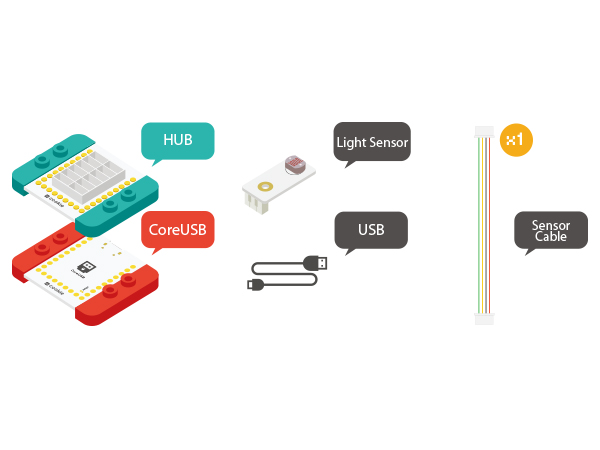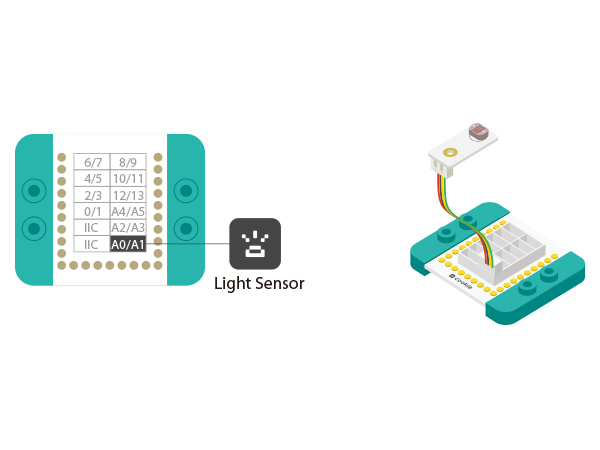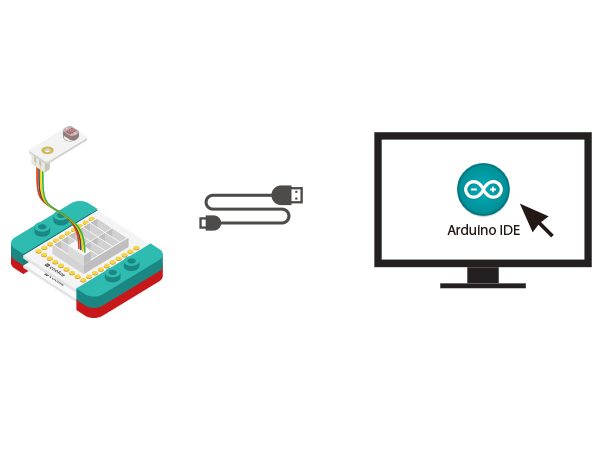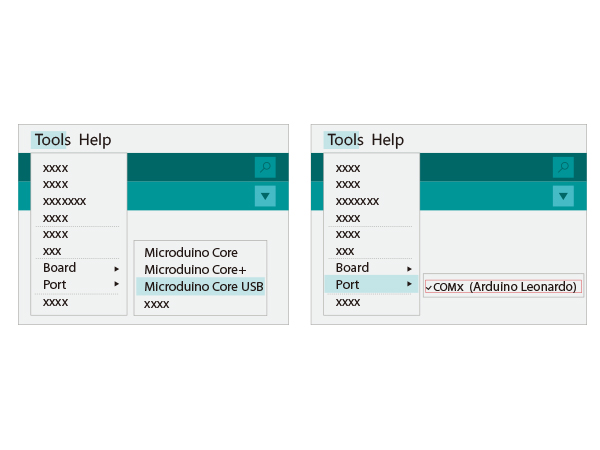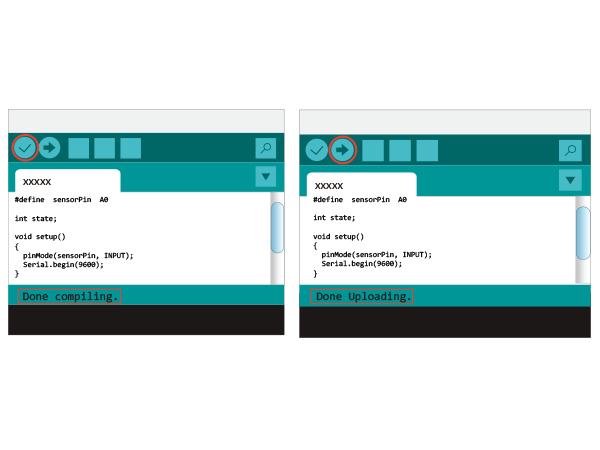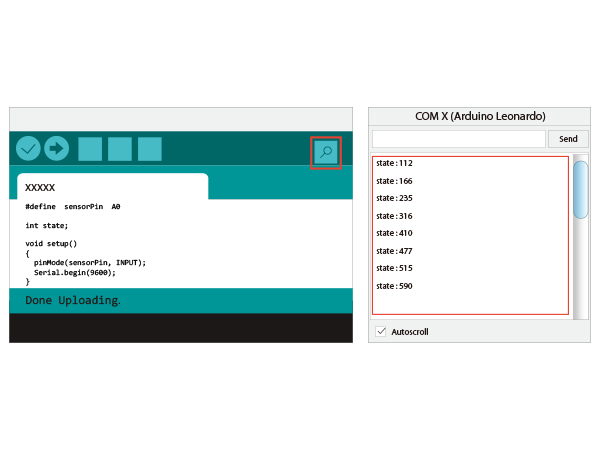Difference between revisions of "The Use of Light Sensor"
From Microduino Wiki
(Created page with "{| style="width: 800px;" |- | ==Objective== How to use Microduino light sensor. ==Equipment== *'''Microduino-CoreUSB''' *'''Microduino-Light Intensity Sensor''' *'...") |
|||
| (4 intermediate revisions by 2 users not shown) | |||
| Line 1: | Line 1: | ||
| + | |||
{| style="width: 800px;" | {| style="width: 800px;" | ||
|- | |- | ||
| | | | ||
| − | == | + | ==Outline== |
| − | + | The Microduino Light Sensor uses a photosensitive resistor to detect the amount of ambient light present. The sensor is effectively a resistor that changes in value as the light intensity surrounding it changes. The sensor will output a voltage value that corresponds to the amount of light detected by the sensor. | |
| − | |||
| − | |||
| − | |||
| − | |||
| − | |||
| − | |||
| + | Couple the sensor to an LED and you have a smart light that illuminates a room as it gets dark! | ||
| + | ==Specification== | ||
| + | *Electrical Specifications | ||
| + | **Analog Output Device | ||
| + | **Analog Output: 0-1023 (with Microduino Core modules) | ||
| + | *Technical Specifications | ||
| + | **Bright Resistance(up to 100Lux): 8-20kΩ | ||
| + | **Dark Resistance: 1MΩ | ||
| + | **Sensitivity: | ||
| + | ***Given light intensity of 10Lux and 100Lux, with corresponding resistances (R10 and R100), the sensitivity factor is 0.8. This gives you a sense of how resistance changes with a given quantitative change in the amount of light present. | ||
| + | *Dimensions | ||
| + | **Board: 20mm x 10mm | ||
| + | **Connector: 4-Pin interface, 1.27mm-pitch | ||
| + | *Connection Interface | ||
| + | **Pins: Signal, VCC (power), GND (ground) and NC (not connected) | ||
| + | **'''''NOTE''''': Sensor must be connected to analog capable ports (i.e. A0-A7) | ||
| + | [[File:sensor-light.jpg|center|400px]] | ||
| + | ==Development== | ||
| + | ===Equipment=== | ||
| + | {|class="wikitable" | ||
| + | |- | ||
| + | |Module||Number||Function | ||
| + | |- | ||
| + | |[[mCookie-CoreUSB]]||1||Core board | ||
| + | |- | ||
| + | |[[mCookie-Hub]]||1||Sensor pin board | ||
| + | |- | ||
| + | |[[Microduino-Light]]||1||Photosensitive sensor | ||
| + | |} | ||
*Other Hardware Equipment | *Other Hardware Equipment | ||
| − | ** | + | **One USB cable |
| − | + | [[File:module-light.jpg|600px|center]] | |
| − | |||
| − | |||
| − | |||
| − | |||
| − | |||
| − | |||
| − | |||
| − | [[File: | ||
| − | |||
| − | |||
| − | |||
| − | |||
| − | |||
| − | |||
| − | |||
| − | |||
| − | |||
| − | |||
| + | ===Preparation=== | ||
| + | *Setup 1: Connect Microduino-Light and the A0 analog port of the Hub. | ||
| + | [[file:mCookie-pir-sensor.JPG|600px|center]] | ||
| + | *Setup 2: Connect the CoreUSB, Hub and Light to the computer with a USB cable. | ||
| + | [[file:mCookie-Light-pc.JPG|600px|center]] | ||
| − | + | ===Experiment: Detect analog Brightness Value === | |
| − | + | * Open Arduino IDE and copy the following code into IDE. | |
| − | + | <source lang="cpp"> | |
| + | #define sensorPin A0 | ||
| + | int state; | ||
| − | = | + | void setup() |
| + | { | ||
| + | pinMode(sensorPin, INPUT); | ||
| + | Serial.begin(9600); | ||
| + | } | ||
| + | void loop() | ||
| + | { | ||
| + | state = analogRead(sensorPin); | ||
| + | Serial.print("state:"); | ||
| + | Serial.println(state); | ||
| + | delay(100); | ||
| + | } | ||
| + | </source> | ||
| + | * Select the right board from Tools→Serial Port in Arduino IDE and download the program. [[file:uploadlight.JPG|600px|center]] | ||
| + | [[file:uploadlight1.JPG|600px|center]] | ||
| + | *After the download, you can open the serial monitor. The displayed value reflects the current light intensity. | ||
| + | [[file:uploadlight3.JPG|600px|center]] | ||
| + | *Result | ||
| + | The stronger the light is, the greater the output value becomes. Therefore, you can build some projects controlled by light intensity change. | ||
| − | + | ===Program Debugging=== | |
| + | *"#define sensorPin A0" defines sensor interface. | ||
| + | *Use"analogRead(sensorPin);"function to read the output analog value of the sensor and therefore, to judge light intensity change. | ||
| + | ==Application== | ||
| + | *Couple the Light Sensor with an LED and you can automate the intensity of the LED based on how bright or dark it is in a room. | ||
==Video== | ==Video== | ||
|} | |} | ||
Latest revision as of 06:43, 30 September 2016
ContentsOutlineThe Microduino Light Sensor uses a photosensitive resistor to detect the amount of ambient light present. The sensor is effectively a resistor that changes in value as the light intensity surrounding it changes. The sensor will output a voltage value that corresponds to the amount of light detected by the sensor. Couple the sensor to an LED and you have a smart light that illuminates a room as it gets dark! Specification
DevelopmentEquipment
Preparation
Experiment: Detect analog Brightness Value
#define sensorPin A0
int state;
void setup()
{
pinMode(sensorPin, INPUT);
Serial.begin(9600);
}
void loop()
{
state = analogRead(sensorPin);
Serial.print("state:");
Serial.println(state);
delay(100);
}
The stronger the light is, the greater the output value becomes. Therefore, you can build some projects controlled by light intensity change. Program Debugging
Application
Video |
